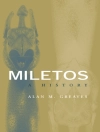The period between 1917 and 1957, starting with the birth of the USSR and the American intervention in the First World War and ending with the Treaty of Rome, is of the utmost importance for contextualizing and understanding the intellectual origins of the European Community. During this time of ‘crisis, ‘ many contemporaries, especially intellectuals, felt they faced a momentous decision which could bring about a radically different future. The understanding of what Europe was and what it should be was questioned in a profound way, forcing Europeans to react. The idea of a specifically European unity finally became, at least for some, a feasible project, not only to avoid another war but to avoid the destruction of the idea of European unity. This volume reassesses the relationship between ideas of Europe and the European project and reconsiders the impact of long and short-term political transformations on assumptions about the continent’s scope, nature, role and significance.
Зміст
List of Maps and Figures
Acknowledgements
Introduction: Europe during the Forty Years’ Crisis
PART :I PROLOGUE
Chapter 1. The United States of Europe: The European Question in the 1920s
Mark Hewitson
Chapter 2. Europe and the Fate of the World: Crisis and Integration in the Late 1940s and 1950s
Mark Hewitson
Chapter 3. Inventing Europe and Reinventing the Nation-State in a New World Order
Mark Hewitson
PART II: REIMAGINING THE PAST
Chapter 4. Richard Nikolaus Coudenhove-Kalergi, Founder of the Pan-European Union, and the Birth of a ‘New’ Europe
Anita Prettenthaler-Ziegerhofer
Chapter 5. Noble Continent? German-Speaking Nobles as Theorists of European Identity in the Interwar Period
Dina Gusejnova
Chapter 6. Imperium Europaeum: Rudolf Pannwitz and the German Idea of Europe
Jan Vermeiren
Chapter 7. New Middle Ages or New Modernity? Carl Schmitt’s Interwar Perspective on Political Unity in Europe
Ionut Untea
Chapter 8. Rosenzweig, Schmitt and the Concept of Europe
Vittorio Cotesta
Chapter 9. From Centre to Province: Changing Images of Europe in the Writings of Jerzy Stempowski
Łukasz Mikołajewski
PART III: MAKING SENSE OF THE PRESENT
Chapter 10. Visualizing Europe from 1900 to the 1950s: Identity on the Move
Michael Wintle
Chapter 11. Europe and the Artistic Patrimony of the Interwar Period: The International Institute of Intellectual Cooperation at the League of Nations
Annamaria Ducci
Chapter 12. Huizinga, Intellectual Cooperation and the Spirit of Europe, 1933–1945
Anne-Isabelle Richard
Chapter 13. The Idea of European Unity in Heinrich Mann’s Political Essays of the 1920s and Early 1930s
Ernest Schonfield
Chapter 14. Lucien Febvre and the Idea of Europe
Vittorio Dini
PART IV: LOOKING TO THE FUTURE
Chapter 15. Junius and the ‘President Professor’: Luigi Einaudi’s European Federalism
Matthew D’Auria
Chapter 16. Federate or Perish: The Continuity and Persistence of the Federal Idea in Europe, 1917–1957
Michael Burgess
Conclusion: Europe between a Crisis of Culture and Political Regeneration
Notes on Contributors
Select Bibliography
Index
Про автора
Matthew D’Auria is Lecturer of Modern European History at the University of East Anglia.












